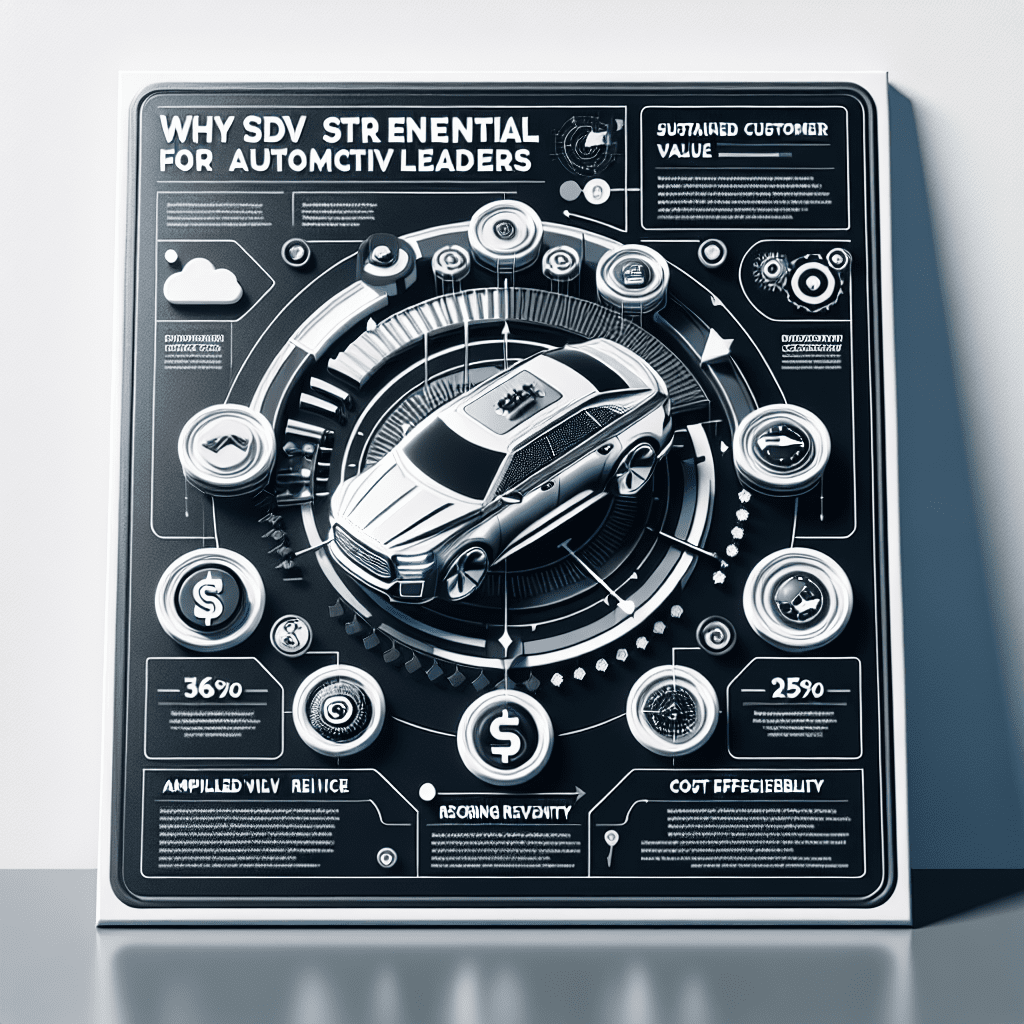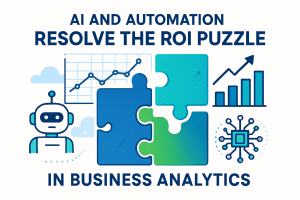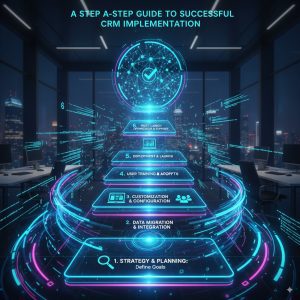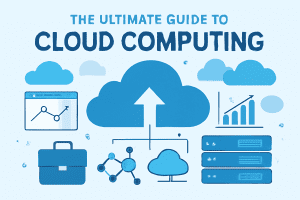Introduction
As the automotive industry races toward a software-driven future, Software-Defined Vehicles (SDV) have shifted from a buzzword to an urgent business imperative. In 2025, OEMs and suppliers who fail to adopt an SDV strategy risk falling behind not only in product features but also in efficiency, customer experience, revenue models, and security. Here’s why every automotive CEO must lead the SDV transformation—plus the benefits, architecture insights, and toughest challenges along the way. For turnkey digital solutions, see TechOTD and their advanced AI services, or explore the company’s about page, industry expertise, partner program, and comprehensive web development capabilities.
What Is a Software-Defined Vehicle (SDV)?
An SDV is a vehicle whose core functions—performance, safety, comfort, connectivity, and even after-sales features—are enabled and continually updated by software. Unlike traditional cars, SDVs evolve and improve over their lifetime via over-the-air updates, AI-powered analytics, and continuous data integration.
Why SDV Strategy is Essential for Automotive CEOs

-
Continuous Customer Value:
-
Over-the-air (OTA) updates let automakers deliver new features, infotainment enhancements, and safety upgrades to vehicles already on the road—eliminating “feature freeze” at the factory.
-
Enhances brand loyalty and customer engagement by ensuring the car improves during its lifecycle.
-
-
Recurring Revenue & Monetization:
-
SDVs turn vehicles into platforms for digital services, opening new revenue streams like subscriptions (for seat heating, premium navigation, or autonomous driving features) and on-demand upgrades.
-
Moves business models from one-time sales to ongoing monetization, increasing lifetime customer value.
-
-
Efficiency & Cost Control:
-
Decoupling software from hardware means faster innovation cycles, less hardware rework, and simplified product portfolios.
-
Enables more predictable R&D budgets and reduces SKUs, benefiting large and complex organizations.
-
-
Enhanced Personalization & Experience:
-
Vehicles can be tailored to individual drivers, offering customizable user profiles, infotainment, real-time navigation, and AI voice assistants for a truly digital driving experience.
-
Predictive maintenance and remote diagnostics add operational efficiency and improved safety.
-
SDV Architecture: The New Automotive Backbone

Adopting SDV requires reimagining automotive architecture from hardware-centric designs to software-focused, centralized platforms. Here’s what that looks like:
-
Domain & Centralized Controllers:
-
Traditional vehicles use multiple electronic control units (ECUs) for each function. SDVs consolidate these into powerful domain or central controllers, managed by a high-performance System-on-Chip (SoC).
-
Artificial intelligence capabilities are built-in for real-time, safety-critical tasks.
-
-
Layered Software Stack:
-
Embedded operating systems manage functions and prioritize safety over entertainment.
-
Middleware ensures secure communication between hardware, applications, and the cloud.
-
Applications deliver features directly to the end-user and may run onboard or in a hybrid cloud configuration.
-
-
Connected Systems:
-
Telecom infrastructure and cloud backend enable continuous data exchange, fleet-wide updates, real-time diagnostics, and smart city integration.
-
Core Challenges in Building an SDV Strategy

-
Legacy & Organizational Barriers:
-
Existing platforms are heavily tied to legacy ECUs, software silos, and supply chains focused on hardware. Transitioning demands organizational transformation as much as technical change.
-
-
Cybersecurity Risks:
-
Fully connected vehicles create larger attack surfaces. Security must be built into every architectural layer, not treated as an afterthought.
-
-
Skill Gaps & Talent Shortages:
-
SDV innovation needs a blend of embedded, cloud, AI, and cybersecurity talent—expertise most automakers currently lack.
-
-
Regulatory Uncertainty:
-
Navigating evolving global and regional rules for OTA updates, data privacy, and liability requires legal agility and transparency.
-
-
Supply Chain Complexity:
-
The rise of SDVs demands new partnerships across tech, chipmakers, cloud companies, and compliance solution vendors—testing traditional OEM-supplier relationships.
-
Why CEOs Need an SDV Strategy
-
Software as the new differentiator: Real customer value comes from in-cabin features, digital experiences, and upgrade flexibility—all enabled by software.
-
Competitive advantage: First movers unlock new revenue streams (subscriptions, digital services), move faster to market, and gain stronger customer loyalty.
-
Continuous evolution: SDVs can fix bugs, add features, and customize experiences instantly, keeping vehicles “fresh” and future-proof.
-
Regulatory readiness: Software-driven architecture allows fast rollout of compliance features (cybersecurity, emissions, safety).
The Benefits of SDV Adoption

-
Personalization & Flexibility: Update UIs, infotainment, and features for different users or regions, even post-sale.
-
Remote Services & Maintenance: OTA updates, remote diagnostics, and predictive maintenance lower costs and minimize recalls.
-
Enhanced Safety & Security: Deploy new ADAS and emergency features rapidly and maintain robust security.
-
New Revenue Streams: Microtransactions, feature unlocks, or third-party app ecosystems are possible.
-
Sustainability: Less hardware, optimized energy, and better support for electric and connected mobility.
Core SDV Architecture Principles

-
Centralized Computing: Fewer, high-powered compute domains replace many fragmented ECUs, enabling software/hardware decoupling.
-
Cloud-Native & Edge Integration: Advanced analytics, storage, and multi-vehicle services in the cloud; real-time safety on edge devices.
-
Modular, API-Driven Design: Rapid feature integration, better interoperability, and streamlined DevOps.
-
Secure-by-Design: Security and safety are core to the stack—from ISA/SOC standards to privacy compliance.
The Biggest Challenges in SDV Transformation

-
Software Complexity: Modern vehicles run tens of millions of code lines—robust QA and cross-disciplinary teams are essential.
-
Cybersecurity: Greater complexity and connectivity increase attack surfaces, requiring strong, layered defense and constant vigilance.
-
Legacy Integration: Migrating from legacy hardware/software to modern SDV architectures is costly and complex.
-
Supply Chain & Talent: Collaboration across chipmakers, cloud providers, and digital talent is critical.
-
Global Compliance: Regulations (like ISO 26262, ISO/SAE 21434) evolve rapidly, demanding agile, embedded compliance processes.
Strategic Advice for Automotive Executives

-
Set a bold SDV vision: Make the SDV model central to future products and culture.
-
Invest in digital talent: Hire and upskill in software, AI, DevOps, and cybersecurity.
-
Develop the right partnerships: Work with technology providers, consultancies, and AI/cloud platforms to accelerate transformation. Consider becoming a TechOTD partner.
-
Prioritize secure architecture: Focus on defense-in-depth, robust OTA, modular systems, and continuous compliance.
-
Center on user experience: Prioritize personalization, upgradability, and feedback loops.
-
Start small, scale rapidly: Use MVPs, pilots, and agile rollouts to minimize risk and drive learning, then expand.
Conclusion
A software-defined future is already unfolding on the roads. For automotive CEOs, standing still means falling behind. SDV strategies empower automakers to deliver dynamic, upgradeable products, create resilient revenue streams, transform customer satisfaction, and lead in the digital mobility marketplace. Now is the moment to invest in software talent, rethink platform architecture, prioritize security by design, and build future-ready ecosystems. The next generation of industry winners will be defined by their mastery of software—and their willingness to lead this transformation.
Accelerate your SDV journey:
Get in touch for strategy, AI, integration, and secure web development with TechOTD’s expert services, explore their AI solutions, or review the about page for industry insights and partnership opportunities.
Useful Links & Backlinks
FAQ
-
What is a Software-Defined Vehicle (SDV)?
-
An SDV is a vehicle whose features, functions, and value are driven primarily by software, enabling updates, enhancements, and services long after the car leaves the factory.
-
-
How can SDVs boost automaker revenue?
-
SDVs allow for recurring revenue through digital services, paid OTA updates, subscriptions, and personalized user experiences—beyond just the initial car sale.
-
-
What architecture changes are required for SDV?
-
SDVs need centralized or domain controllers, high-performance SoCs, layered software stacks, cloud integration, and a fully connected infrastructure.
-
-
Are there cybersecurity risks with SDVs?
-
Yes. Connected cars are higher-value targets for hackers, so rigorous, multi-layered cybersecurity is essential in SDVs.
-
-
What are the main organizational challenges in SDV adoption?
-
Legacy structures, skill shortages, and resistance to change require leaders to redesign internal teams and partnerships for a software-first future.
-











